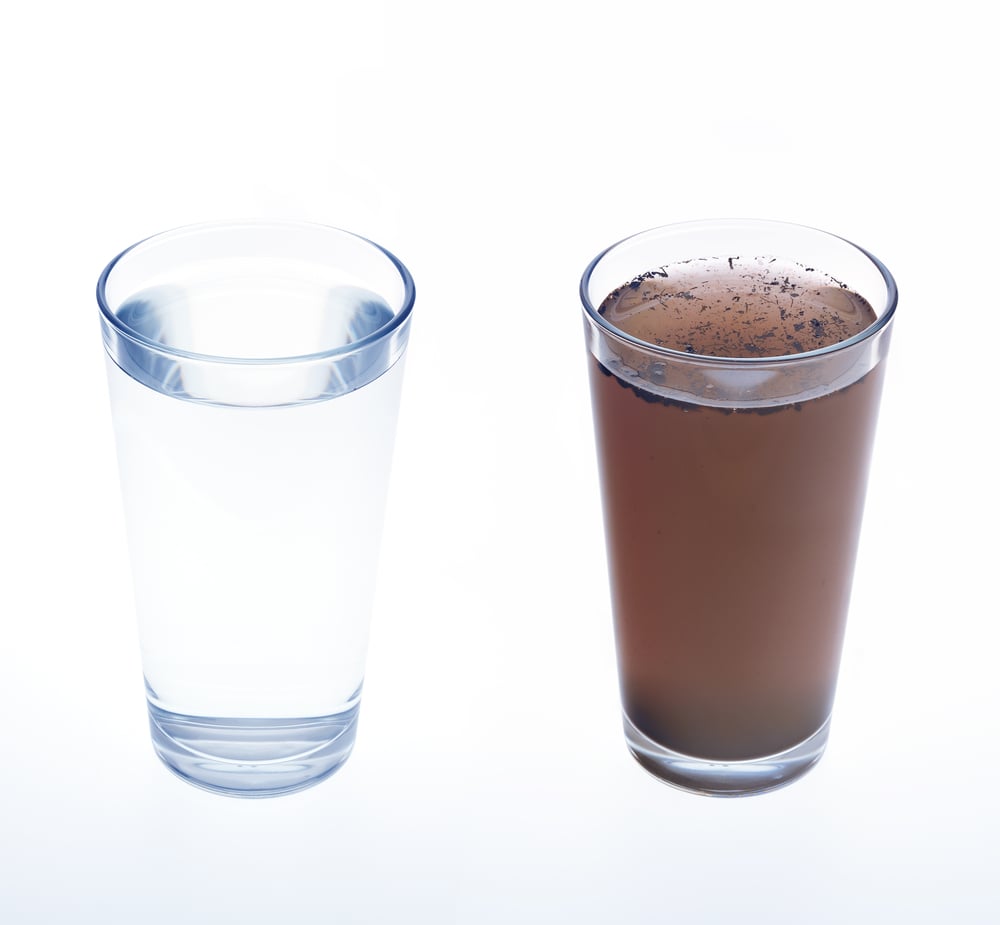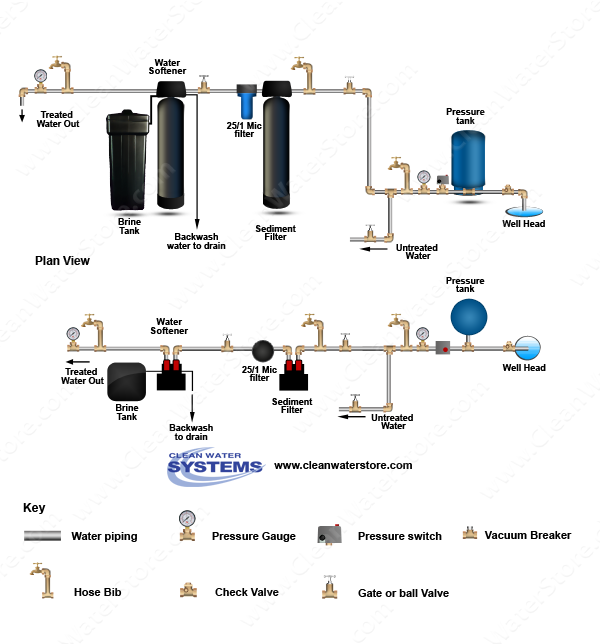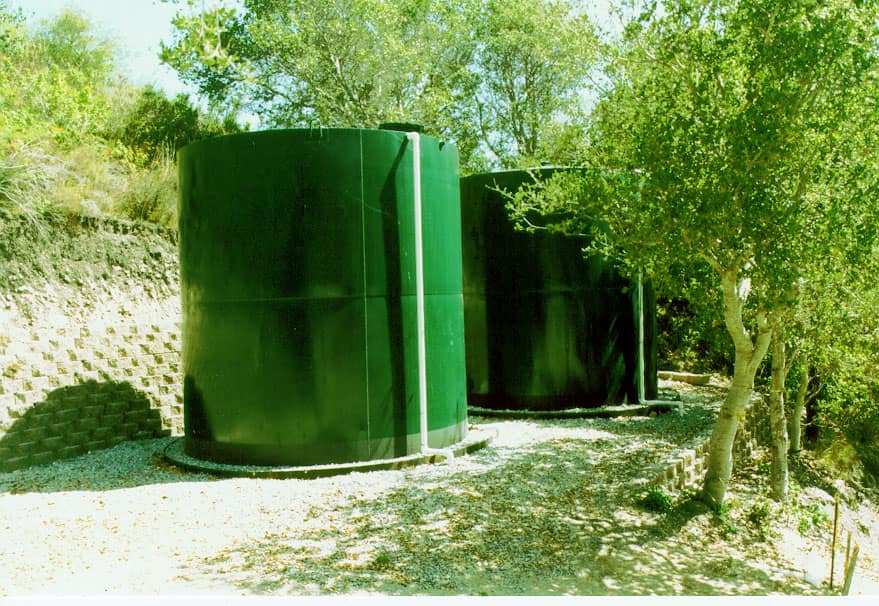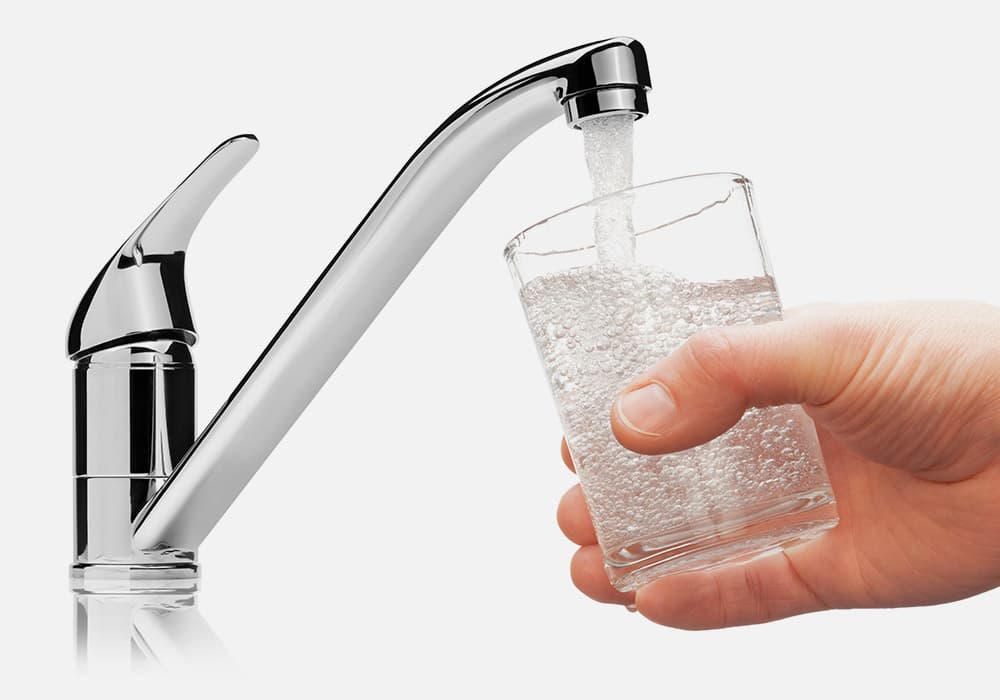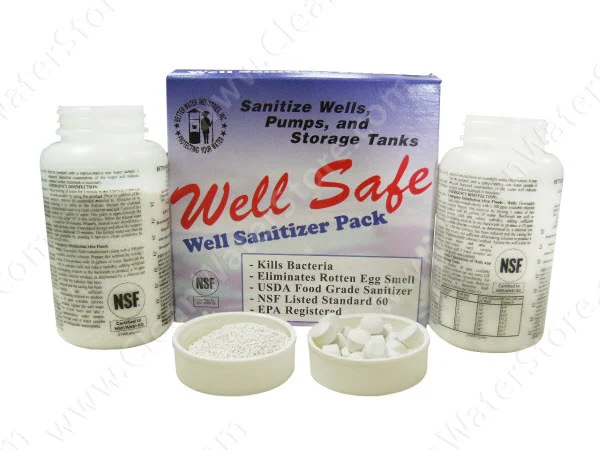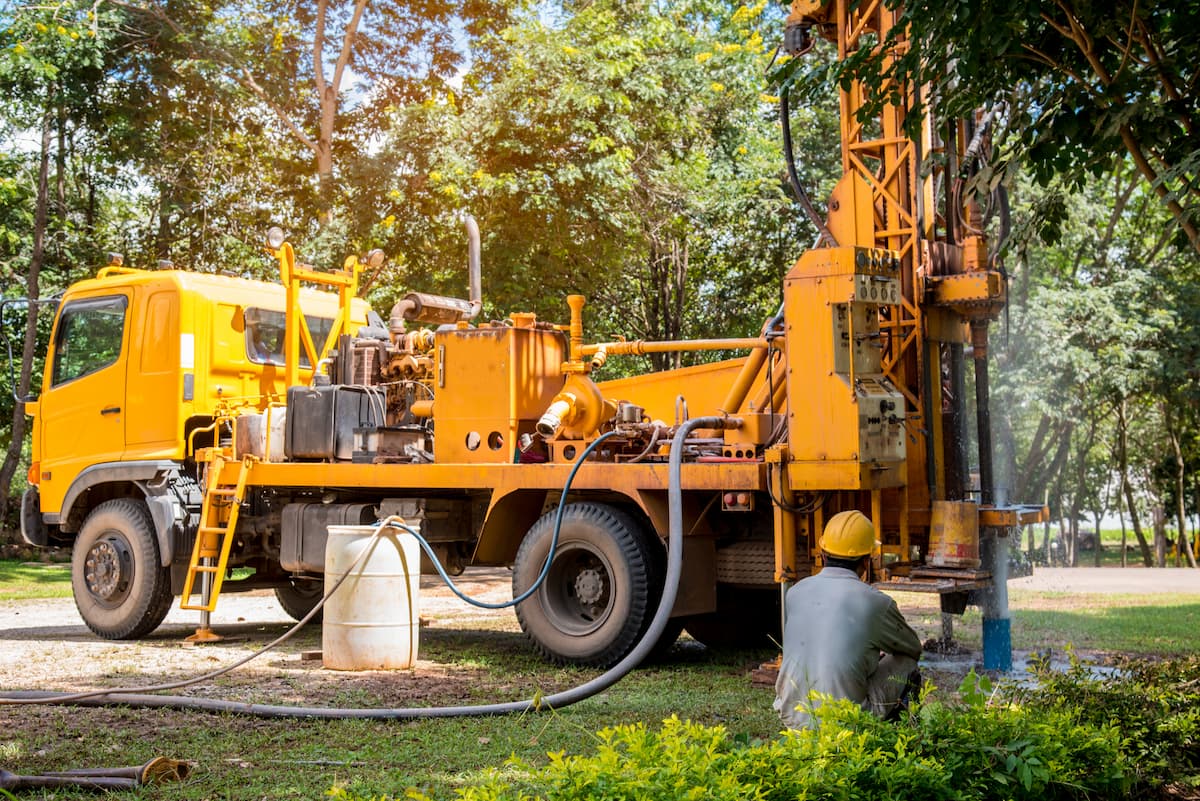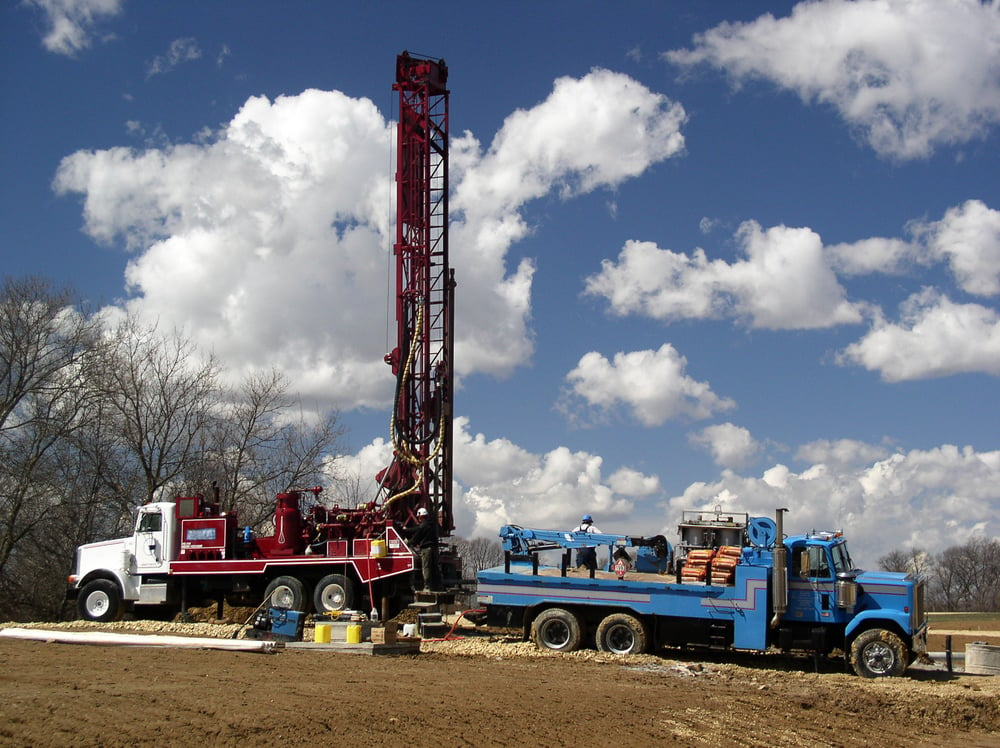Removing Sediment From Well Water
How to Remove Sediment in Well Water
One homeowner recently contacted us about a problem with sediment in his water. He had recently installed a new well pump to increase his water pressure, but found after installation that his water was now heavily contaminated with silt, reducing the efficiency of his plumbing system. If you have ever had similar problems, read on for the solution to silt and sediment in your water:
Firstly, consider a Sediment Backwash Filter. A Chemsorb Sediment Backwash filter (see below) will remove all waterborne particles down to 5 microns — usually this means about 95% of the particles. After the Sediment Backwash filter, you might want to install a 5 and/or 1 micron filter to catch any particles less than 5 microns.
With the Sediment Backwash Filter in place, these 1 or 5 micron filters will last many times longer and stay much cleaner. The Sediment Backwash Filter can also be set to backwash at night for 5 – 10 minutes, totally restoring the pressure in your system and increasing the lifespan of your filter.
It is important to determine the source of the sediment to effectively address the issue.
Note that for the 1.5 CF size below (a good size for a home with 1 – 3 bathrooms), your well pump must be able to pump 7 gallons per minute; this shouldn’t be a problem, though, as most wells can pump at least that rate.
Various solutions for sediment problems include pump adjustments and installing new well screens.
Consulting a professional is crucial for diagnosing and resolving sediment issues effectively.
Sediment Backwash Filter
Important Note: The Fleck 7000 is no longer being manufactured. While the information in this post still applies to general sediment removal systems, we now offer an updated option: the Iron Filter 7500, which features advanced controls and performance. Check it out here.
Filter down to 5 microns without the need to change filter cartridges. Great for removing fine particles, dirt, and rust. Unlike filter cartridges, the Sediment Backwash Filter 7000-SXT will not restrict flow or pressure. Automatic backwash control assures media stays clean. Filter media lasts for 4 – 6 years and is easy to change. The special Chem-Sorb filter media will remove sediment and particles down to 5 to 10 microns in size. The automatic backwash filter clarifies water, removing very fine particles, rust, and sediment.
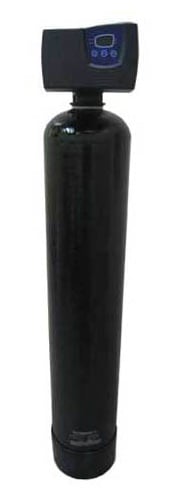
Chemsorb is a high-purity, low-sodium, natural zeolite mineral that has an ANSI/NSF Standard 61 Listing. The material is mined, crushed, dried, and double-screened to produce a high-quality filter media that has a high throughput capacity at low differential pressure.
Compared to filter sand and some other filter media, the Chemsorb allows higher flow rates with less pressure loss. The Chemsorb media have surface micro-mineral projections with 0.25 to 10 µm spacing that effectively trap suspended solids. The surface micro-projections, together with the high surface area, make this material an ideal water filtration medium.
All models come complete with filter tank, auto backwash control valve, bypass valve, filter gravel, and Chemsorb media. Options include a flow sensor, which enables the Sediment Backwash Filter to backwash based on the amount of water used and/or the number of days between backwashes.
Big Blue Dual Grade Filter with 25/1 Micron Cartridge
This Dual-Grade 5/1 micron cartridge filters super-fine particles of 1 micron size and above, and is often used as a final stage after pre-filtration or as a post-filter to an automatic backwashing filter system.
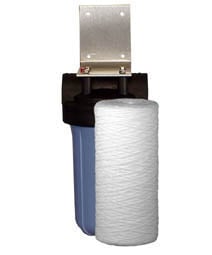
The filter housing is made from NSF-listed pure polypropylene and will hold one high-flow 4.5″ x 20″ filter cartridge. This system comes complete with a wall mounting bracket kit, filter wrench, and one Dual Grade 25/1micron DGD-2501, 4.5″ x 20″ filter cartridge.
Softener 7000-SXT
Enjoy scale-free fixtures and appliances with soft water. No more dry skin or dry hair caused by excess minerals in your water! Save money by using less soap and laundry detergent and extend the life of your clothes, water heater, and appliances with soft conditioned water from the Fleck 7000-SXT on-demand softener.
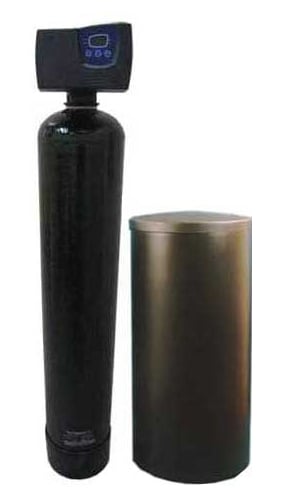
Well designed and reliable, the Fleck 7000SXT Electronic Meter-Demand Valve provides larger 1-1/4″ internal ports for the best flow rates and least pressure drop, making this valve perfect for use in larger homes with 1″, 1-1/4″, or even 1-1/2″ plumbing. No matter what size home you have, you’ll see less pressure drop through this softener than other residential softeners.
The new 7000-SXT softener uses less salt by monitoring the amount of water used in the house and regenerating only when necessary. If there is a power failure, it can keep the correct time up to 48 hours, and the system keeps time electronically, so the drive motor only runs during regeneration, saving energy and lasting longer than other softeners with standard timer motors.
Here's a diagram of a standard installation of these systems:
Introduction to Sediment Removal
Sediment removal is a crucial process for maintaining the quality and safety of well water. Sediments, such as sand, silt, and dirt, can enter the water supply through various means, including improper pump placement, well screen degradation, and natural geological formations.
If left unchecked, sediments can cause significant problems, including clogged pipes, reduced water pressure, and premature wear on pumps and other equipment. In this section, we will explore the importance of sediment removal and the various methods available for removing sediments from well water.
Understanding Well Water
Well water is a vital source of drinking water for many households, particularly those in rural areas. However, well water can be susceptible to sedimentation, which can affect its quality and safety. Sediments can enter the well water through the well casing, well screen, or surrounding soil.
Understanding the sources of sedimentation is essential for determining the best solution for removing sediments from well water. Common sources of sedimentation include geological formations, such as sandstone and limestone, and human activities, such as construction and excavation.
Water Systems and Sediment
Water systems, including private wells and municipal water supplies, can be affected by sedimentation. Sediments can enter the water system through various means, including pump intake, well screen, and pipe connections. Sedimentation can cause significant problems, including reduced water pressure, clogged pipes, and premature wear on pumps and other equipment.
Water filtration systems, such as centrifugal sand separators and spin-down filters, can be effective in removing sediments from well water. Regular maintenance and testing are essential for ensuring the quality and safety of well water.
Pump Placement and Sediment
Pump placement is a critical factor in preventing sedimentation in well water. Improper pump placement can cause sediments to be stirred up and drawn into the water supply. A submersible pump should be placed at least 10-20 feet above the bottom of the well to prevent sedimentation.
Additionally, the pump should be sized correctly for the well to prevent excessive pumping, which can stir up sediments. Regular pump repair and maintenance are essential for ensuring the quality and safety of well water.
Well Screen and Sediment
The well screen is a critical component of a well water system, as it allows water to enter the well while keeping sediments out. However, the well screen can become degraded or corroded over time, allowing sediments to enter the water supply. Regular inspection and maintenance of the well screen are essential for preventing sedimentation.
A centrifugal sand separator or spin-down filter can be installed to remove sediments from the water supply. Additionally, a water softener can be installed to remove minerals, such as iron and manganese, which can contribute to sedimentation. Regular testing and maintenance are essential for ensuring the quality and safety of well water.
We hope this has been a useful overview of removing sediment from your water. Remember, we're here to help with any other water or water system issues you may have. Just send an email to support@cleanwaterstore.com.

